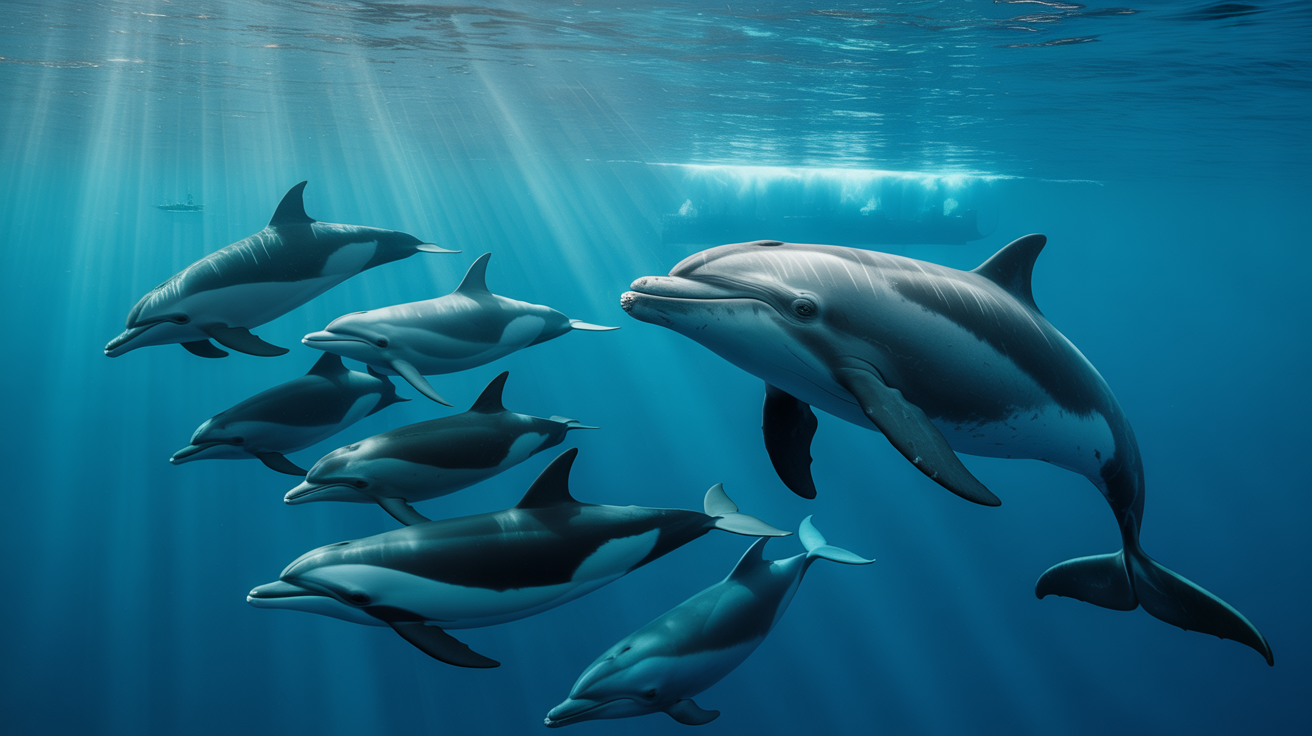Understanding Ocean Noise Pollution
The vast blue expanse of our oceans may look peaceful, but beneath the waves, a cacophony of human-made noise is growing louder each year. This phenomenon, known as ocean noise pollution, is an increasing threat to marine mammals such as whales, dolphins, seals, and porpoises. These intelligent creatures rely on sound for communication, navigation, hunting, and even social bonding. But how does noise pollution disrupt their lives, and why should we be concerned?
Sources of Ocean Noise
Sound travels far and fast underwater, and many human activities contribute to the rising noise levels in the ocean. Some of the primary sources include:
- Commercial Shipping: With over 90% of global trade carried by sea, large cargo ships and tankers produce constant low-frequency noise that can travel for hundreds of kilometers.
- Oil and Gas Exploration: Seismic airguns used for finding underwater oil and gas reserves create intense sound blasts every few seconds, sometimes for weeks at a time.
- Naval Sonar: Military sonar systems emit powerful sound waves that can disturb and even injure marine mammals in their path.
- Construction: Coastal development, including pile driving and dredging, adds intermittent but intense noise to marine habitats.
- Recreational Activities: Speedboats, jet skis, and cruise ships also contribute to the underwater soundscape.
Why Sound Matters to Marine Mammals
Unlike humans, marine mammals depend almost entirely on sound to "see" their world. The ocean is often dark or murky, making sight unreliable. Instead, species like whales and dolphins use echolocation—a sophisticated biological sonar—to find food, avoid predators, and navigate vast distances. Many also use complex songs and calls to communicate with each other, sometimes across entire ocean basins.
Did you know? The low-frequency calls of blue whales are among the loudest sounds made by any animal on Earth and can travel over 1,000 miles underwater.
Impacts of Noise Pollution on Marine Mammals
Rising ocean noise can have serious consequences for marine mammals:
- Communication Breakdown: Noise can mask the calls of whales and dolphins, making it difficult for them to find mates, coordinate group hunting, or keep track of their young.
- Disrupted Navigation: Loud or sudden noises can interfere with echolocation, causing animals to become disoriented or stranded.
- Stress and Hearing Damage: Prolonged exposure to noise can lead to stress, hearing loss, and even physical injury. In extreme cases, naval sonar has been linked to mass strandings of whales.
- Habitat Abandonment: When noise levels become too high, marine mammals may be forced to leave important feeding or breeding areas, threatening their survival.
Case Study: Beaked Whale Strandings
Beaked whales are among the most sensitive marine mammals to sonar and loud noises. In several documented incidents, naval exercises using mid-frequency sonar have coincided with mass strandings of these deep-diving whales, highlighting the urgent need for noise management in sensitive habitats.
Conservation Efforts and Solutions
Thankfully, awareness of ocean noise pollution is growing, and steps are being taken to protect marine mammals:
- Quieter Ship Design: Engineers are developing ships with quieter engines and propellers to reduce noise emissions.
- Speed Restrictions: Slowing down ships in key habitats can significantly lower underwater noise levels.
- Regulation of Sonar and Seismic Surveys: Many countries now require environmental assessments and seasonal restrictions to minimize disturbance during sensitive periods, like breeding or migration.
- Marine Protected Areas: Establishing noise-free zones allows marine mammals to rest, feed, and reproduce without interference.
Individuals can also help by supporting ocean-friendly policies and organizations, choosing quieter recreational activities, and spreading awareness about this silent threat.
Why Protecting Marine Mammals Matters
Marine mammals play vital roles in maintaining healthy ocean ecosystems. Whales, for example, help cycle nutrients that support plankton blooms, which in turn produce much of the oxygen we breathe. By protecting these remarkable animals from the dangers of noise pollution, we also safeguard the health of our oceans—and ourselves.
"The greatest threat to our planet is the belief that someone else will save it." – Robert Swan
Take Action for Quieter Oceans
Ocean noise pollution may be invisible, but its impact on marine life is profound. By understanding the sources and effects of underwater noise, we can make informed choices and support conservation efforts that give whales, dolphins, and other marine mammals a voice—one that can be heard above the din of human activity.



